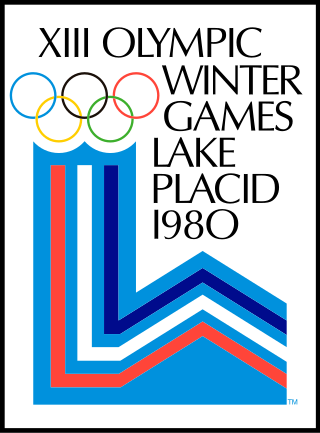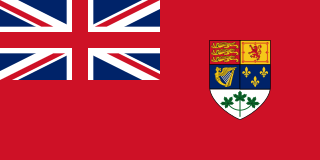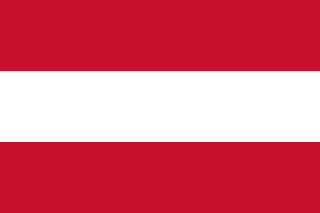
The Winter Olympic Games, also known as the Winter Olympics, is a major international multi-sport event held once every four years for sports practiced on snow and ice. The first Winter Olympic Games, the 1924 Winter Olympics, were held in Chamonix, France. The modern Olympic Games were inspired by the ancient Olympic Games, which were held in Olympia, Greece, from 776 BCE to 394 CE. The Baron Pierre de Coubertin of France founded the International Olympic Committee (IOC) 1,500 years later in 1894, leading to the first modern Summer Olympic Games in Athens, Greece in 1896. The IOC is the governing body of the Olympic Movement, with the Olympic Charter defining its structure and authority. The original five Winter Olympic Sports were bobsleigh, curling, ice hockey, Nordic skiing, and skating. The Games were held every four years from 1924 to 1936, interrupted in 1940 and 1944 by World War II, and resumed in 1948. Until 1992, the Summer Olympic Games and the Winter Olympic Games were held in the same year. A decision to change this was made in 1986, when during the 91st International Olympic Committee session, IOC members decided to alternate the Summer Olympic Games and the Winter Olympic Games on separate four-year cycles in even-numbered years. Also, at that same congress it was decided that 1992 Winter Olympics would be the last to be held in the same year as the Summer Games and that to change the rotation, the games that would be held in 1996 would be brought forward by two years, being scheduled to 1994. After those games, the next were to be held in 1998 when the four-year Olympic Cycle resumed.

The 1980 Winter Olympics, officially the XIII Olympic Winter Games and also known as Lake Placid 1980, were an international multi-sport event held from February 13 to 24, 1980, in Lake Placid, New York, United States.

The 1932 Winter Olympics, officially known as the III Olympic Winter Games and commonly known as Lake Placid 1932, were a winter multi-sport event in the United States, held in Lake Placid, New York, United States. The games opened on February 4 and closed on February 13. It was the first time the Winter Games were held outside of Europe and the first of four Winter Olympics held in the United States; Lake Placid hosted again in 1980.

Canada competed at the 1932 Winter Olympics in Lake Placid, United States. Canada has competed at every Winter Olympic Games.
At the 1928 Winter Olympics, two cross-country skiing events were contested. The 50 km competition was held on Tuesday, 14 February 1928 while the 18 km event was held on Friday, 17 February 1928.
The 1936 Winter Olympics were held in Garmisch-Partenkirchen, Germany. The games began on 6 February 1936, and ended on 16 February 1936. There were three cross-country skiing events held, in which only men competed. There were 109 male competitors from 22 different nations. The youngest participant was 17-year-old Resat Erces from Turkey, while the oldest participant was Nils Backstrom from the United States of America at 34 years old. The athletes whom collected the most medals were Oddbjørn Hagen of Norway, and Erik Larsson of Sweden – each received two medals. Sweden collected more medals than any other country in the cross-country skiing events at a total of five.
At the 1948 Winter Olympics, three cross-country skiing events were contested. The 18 km competition was held on Saturday, 31 January 1948, the relay event was held on Tuesday, 3 February 1948, and the 50 km event was held on Friday, 6 February 1948.
At the 1932 Winter Olympics one individual Nordic combined event was contested. It was held on Wednesday, February 10, 1932 and on Thursday, February 11, 1932. Unlike today the ski jump was the last event held. Both events were also individual medal events.

Austria competed at the 1932 Winter Olympics in Lake Placid, United States, February 4 to February 15. The team was composed of 7 athletes, consisting of 6 men and 1 women.

Italy competed at the 1932 Winter Olympics in Lake Placid, United States.

Japan competed at the 1932 Winter Olympics in Lake Placid, United States.

Norway competed at the 1932 Winter Olympics in Lake Placid, United States.

Poland competed at the 1932 Winter Olympics in Lake Placid, United States.

Athletes from Sweden competed in the 1932 Winter Olympics in Lake Placid, United States.

Switzerland competed at the 1932 Winter Olympics in Lake Placid, United States.

The United States of America (USA) was the host nation for the 1932 Winter Olympics in Lake Placid, New York.
The shorter cross-country skiing event of the cross-country skiing at the 1932 Winter Olympics programme was contested of a distance of 19.7 kilometres. It was the third appearance of the event, but the only time this race was held over a distance of 19.7 kilometres. The competition was held on Wednesday, 10 February 1932. Forty-two cross-country skiers from eleven nations competed.
For the 1932 Winter Olympics in Lake Placid, New York, United States, a total of five sports venues were used. This was unchanged from the previous games in St. Moritz. For the first time in the history of the Winter Olympics, an indoor venue was used for the figure skating and six of the twelve ice hockey events at the Olympic Arena. The first bobsleigh venue outside Europe was constructed for use. Four different 18 km and five different 50 km venues were submitted for approval prior to the Olympics. After the 1932 games, three of these venues served as host for their respective championships that were held outside Europe for the first time.

For the 1980 Winter Olympics in Lake Placid, New York, United States, a total of seven sports venues were used. All five of the venues used for the 1932 Winter Olympics were also used at the 1980 Winter Games with adjustments. These adjustments included electronic scoreboards, increased refrigeration, and the addition of a separate luge track. This was the last Winter Olympics where there were separate bobsleigh and luge tracks. The closest finish in Olympic history in cross-country skiing led skiing officials to time future events in hundredths of a second rather than tenths of a second. This would also apply to biathlon events. Eric Heiden won five gold medals at the speed skating oval while the "Miracle on Ice" took place between Americans and Soviets at the Olympic Center. In the late 1990s, the luge track was demolished and a new combination track was constructed in time for the only Winter Goodwill Games held. The sliding venue was named to the American National Register of Historical Places in February 2010.
The men's 50 kilometre cross-country skiing competition at the 1980 Winter Olympics in Lake Placid, United States, was held on Saturday 23 February at Mount Van Hoevenberg, Essex County, New York. Sven-Åke Lundbäck of Sweden was the 1978 World champion and Ivar Formo of Norway was the defending champion from the 1976 Olympics in Innsbruck, Austria.














